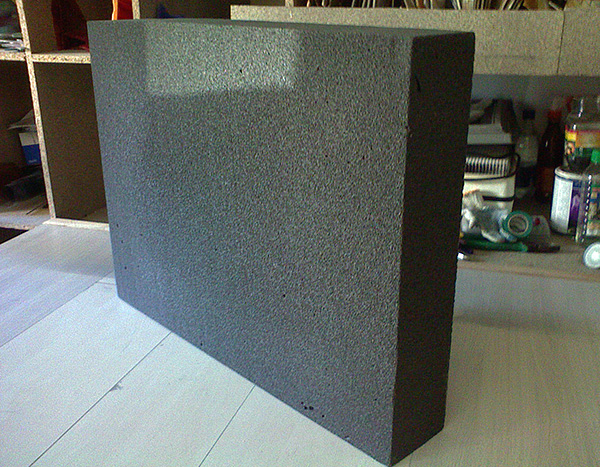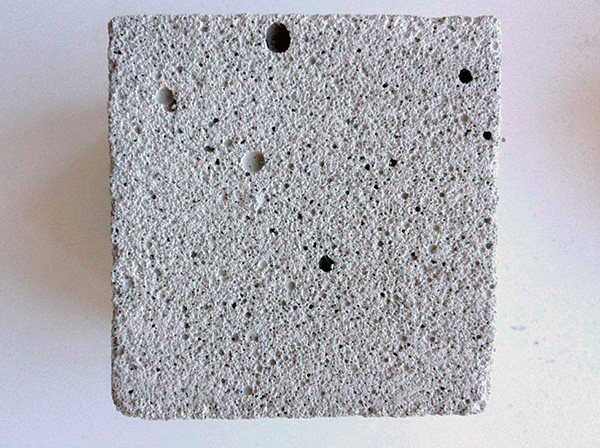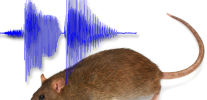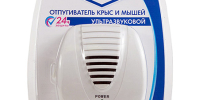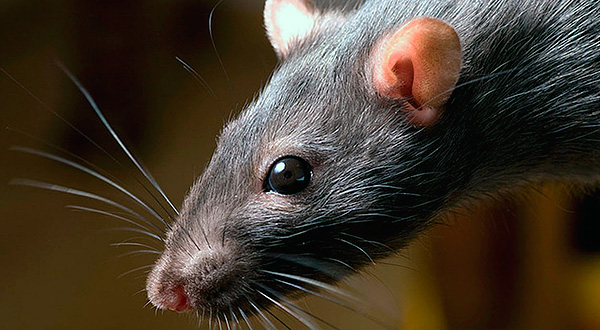
Next you will learn:
- What rats and mice are really afraid of and how it can be used in practice;
- What is useful to know about ultrasonic rodent repellers and what to look for when choosing them;
- In some cases, even the smell of a cat can scare away rats for a long time and what is observed in situations where the cat herself is more afraid of rodents than they are;
- Are rats afraid of light and loud sounds, and is it worth relying on this when fighting rodents;
- Is it possible to somehow use the rats own danger signals once having recorded them, for example, on a telephone;
- What heaters do not like and do not gnaw rats and mice;
- Is it possible to reliably scare away rats with the help of some odorous grass or household chemicals ...
The idea to scare away rats from the house or basement is impressive to many. At a minimum, this seems simpler, safer, and more humane than messing with rat poison or rat traps, then pulling out rodents from traps (sometimes still alive) from the traps.
Meanwhile, many people are skeptical of attempts to scare away rats - someone is convinced that these animals are too smart to be afraid of deterrents, and someone even proudly assures that our "domestic" rats are practically not afraid of anything, and funds that are confidently used abroad in Russia simply do not work.
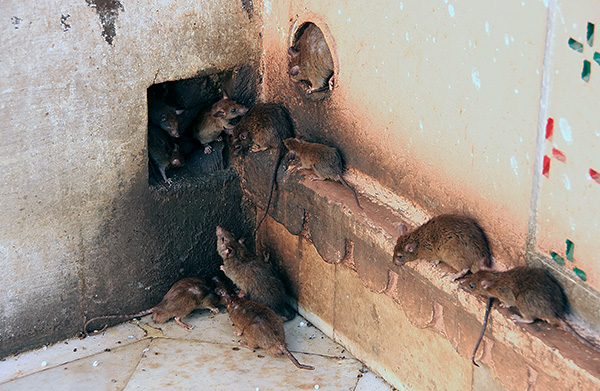
In fact, rodents can really be scared off quite effectively, and the problems in fighting them in practice are often related either to the fact that people don’t know what rats are afraid of, or they use the appropriate means incorrectly. For example, many folk remedies do not work at all and do not allow you to get rid of rodents, although myths about the effectiveness of a number of recipes that are simply copied from site to site without any checks are actively circulating on the Internet.
Also, many ultrasonic repellers of rats and mice, especially the cheapest ones, sin with inefficiency or even completely uselessness in the fight against rodents (this is especially true of the so-called "electromagnetic" and "magnetic resonance" repellers). At the same time, there are quite effective devices on the market that, when used correctly, in many cases really help get rid of rodents in the house.
On a note
Even if you know for sure what kind of smell rats and mice do not like - this can not always be used in practice to remove pests from home. For example, rodents definitely do not like the smell of cat urine and ammonia (ammonia). But if you use such smells frantically to repel pests, you can bring your own housing to such a state that it will be impossible to stay in it. And it is still unknown who will be able to scare off first - rats, or people who decide to come to visit you ...
Therefore, it is advisable to use rats, first of all, those means and methods that really scare them, but which are quite normally perceived by humans. By the way, there are not so many such tools that “terrify rats”.
What do rats really fear and dislike
Perhaps the main problem with scaring away rats is that, with rare exceptions, these animals are afraid of the same smells and sounds that are unpleasant to humans. To get rid of rodents, without violating their comfortable living indoors, you should use tools that are familiar to the person, or invisible at all, but which the rats do not tolerate.
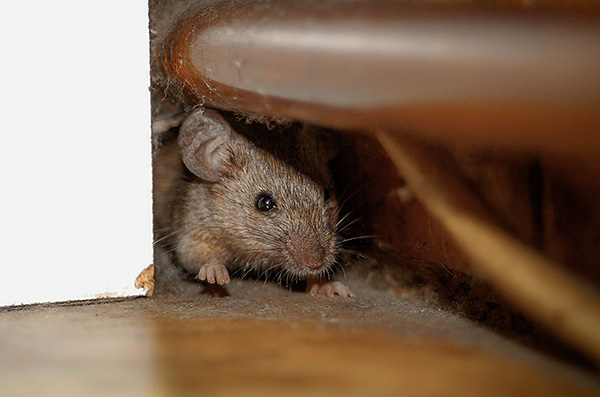
Among them:
- Ultrasonic repellents of rodents (high-quality, not Chinese tweeters) - people do not hear ultrasound, and rats perceive it at a certain frequency and intensity - they are afraid (more precisely, they feel discomfort);
- Cats (and, to a lesser extent, their smell);
- Bright light (provided that the animals are not used to it);
- Loud noises;
- The sounds by which the rats themselves transmit danger signals to each other.
A common drawback of such effects is that rats can get used to them, and the longer a specific sound or smell acts on rats, the less they can be afraid of it. So, when using this or that option, you should always take into account the probability of the development of individual rodent immunity to repellents.
Fortunately, addiction in animals does not develop very quickly, and often they manage to drive them away long before they become immune to this or that impact.
On a note
To effectively deal with rodents in a private house, it is also useful to know what kind of insulation rats and mice do not bite, as the wrong choice of insulation can create ideal conditions for rodents to live in the walls of the house and in the attic. We’ll talk about this in more detail below, but for now we’ll just note that contrary to popular belief, glass wool in most cases is not able to scare away rats - rodents easily make their moves in it.
Ultrasound and methods of its application
Rats and mice hear sound with a frequency of up to 80-100 kHz, while a person is no longer practically unable to perceive vibrations with a frequency above 20 kHz. Sound with a frequency above 20 kHz is called ultrasound, and it meets one of the requirements for means of repelling rodents - to affect rats and mice without affecting humans.
It has been verified that devices that emit sound waves with frequencies from 20 kHz to 70 kHz can really scare off rats quite effectively. At the same time, an effective repeller should not only generate ultrasound, but also have a number of other important characteristics.

Here are the most significant of them:
- High sound pressure force (parameter similar to volume, but in the ultrasonic range). The greater the sound pressure, the higher the likelihood that the rats will not be able to make the sounds produced by the device and leave the territory;
- Wide radiation pattern of the emitted ultrasound - determines which direction and how widely the sound is distributed. Ideally, it should approach 360 °, that is, in fact, ultrasound in this case will spread evenly around the repeller. Most devices have such an angle and declared, but in fact the radiation pattern of their ultrasound barely reaches 50 °;
- Automatically changing ultrasound frequency. It is important to understand that not every ultrasound scares rats. Just as not every sound causes discomfort in humans, so not every ultrasound repels rodents. But if the device constantly changes the frequency of the emitted ultrasound, then rodents will not be able to avoid periodic discomfort.
The most effective ultrasonic repellers against rats today include Biostrazh, Chiston 2, Chiston 2 PRO, Tornado 800, TM-315 and some others. They are one of the most expensive. More affordable devices are not so powerful, and some of the cheapest tools are frank rubbish, useless and not at all able to scare rats.


In addition, rats can get used to ultrasound, as well as to any other sounds. This is rare, but it happens. In this situation, pests for the first time when you turn on the device can leave the room, but then will come back again.
Ultrasonic repellers, when used correctly, do not adversely affect people, but they can cause headaches in some. It should also be borne in mind that cats and dogs can hear the ultrasound, especially domestic mice, rats and hamsters, and therefore if there are pets in the house, such a device may not be possible to use.
At the same time, the cat itself, and sometimes the dog itself, is often a much more effective “repeller” of rats and mice ...
Cats and their smell in the house
Everything is simple here: cats are the natural enemies of rats and mice, and therefore rodents avoid places where there are fresh traces of the vital activity of cats. Even if a cat or cat does not prey on pests in the house (which often happens in pampered pets), rats are afraid of their smell, which reduces the likelihood of rodents, but, however, does not guarantee their complete absence.
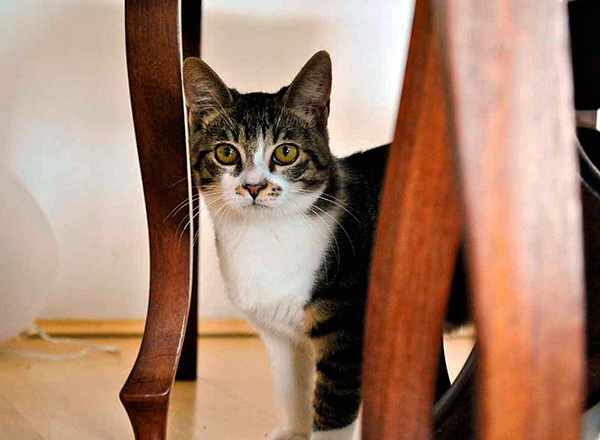
It should be noted that although we are talking about the smell of a cat, this does not mean that all the walls and furniture in the apartment should be thoroughly saturated with the caustic aroma of cat urine. The sense of smell in rats is sharper than in humans, and they are afraid to enter rooms with a cat, where a person may not smell at all. And if the owners in the house from time to time forget to change the filler in the tray, the rats will literally “hit in the nose” with the rats, and they prefer not to run into the room once again.
If the cat does not catch rats, they can eventually get used to its smell and calmly tolerate such a neighborhood. In this case, rats usually just live in the same house with a cat, but avoid direct encounters. Especially impudent rodents can seemingly defiantly go about their business in full view of a cat, and sometimes even attack it.
Here, by the way, a lot depends on the nature of the rat itself, and on the experience of the cat. It happens that cats are afraid of rats, because they have never met them in their life and do not know how (and most importantly - why) to catch these housing neighbors. Most often, pets who grow up in apartments and never get their own natural production behave this way. Even experienced, but lazy and always fed cats do not prey on rodents simply because of laziness, and with especially impudent behavior of rats they can even be afraid of them. It is in such cases that various comic situations arise when a rat can scare cats or even drive them away from food.
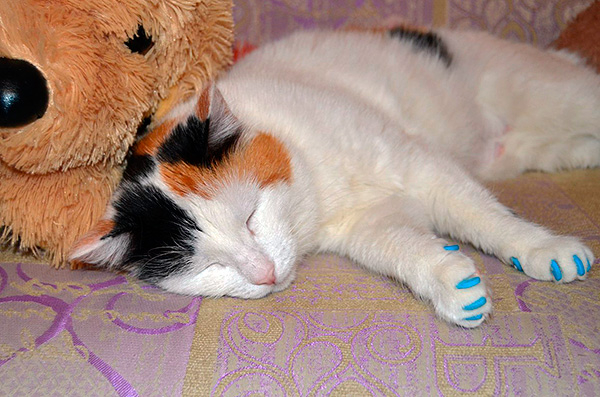
Normally, cats are not afraid of rats, and if you do not overfeed them, then they are actively hunted for fun and fresh meat. In rural areas, cats are specially fed only from time to time so that they switch to pasture and eat pests in the house and garden.

From the foregoing, we can conclude: rats are afraid of cats in the case when they hunt them. At first, the cat itself and its smell can scare away the pests, but it only takes the rats to understand that the cat is not dangerous for them - and the resettlement of rodents in the house becomes just a matter of time.
On a note
Generally speaking, rats are afraid of people, dogs and any other large animals (and birds including turkeys, geese, guinea fowls and chickens) that they see for the first time. If animals meet over and over again somewhere with a person and get used to the fact that they are not hunted, then they stop being afraid and often become very arrogant. There are cases when rats stole food from the table right in front of people, or from a dog’s bowl - from under the dog’s nose.
It is also interesting that mice are afraid of rats, since rats, like larger predators, pose an immediate danger to them. However, this fact in the fight against rodents is not useful in practice.
Shine
Rats are nocturnal animals, and ceteris paribus they prefer to be in dark places and go out in search of food at dusk and in the dark. However, they easily and quickly adapt to light, and if they do not encounter any dangers in illuminated places and in bright rooms, they quickly cease to be afraid of light. Often, rats switch to daytime activity and collect food in daylight.
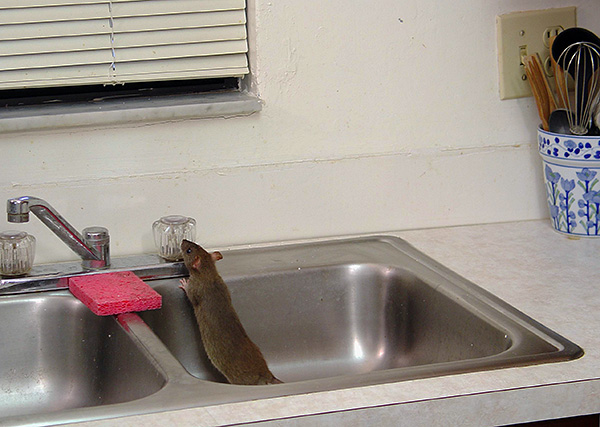
This means that although in the general case the rats are afraid of the light, it will not work to use this for constant scare.If you leave the light on in the room, then after a few days the animals will stop paying attention to it.
On a note
Interestingly, due to the specifics of vision, rats do not perceive infrared light. In zoos, this is used to transfer night rodents to day mode: during the day, a red light is on in the aviary, and animals believe that they are in the dark, and at night the usual incandescent lamp turns on, and rodents go to bed. As a result, visitors during the day can watch the animals leading a nocturnal lifestyle.
Loud noises
This factor is very specific: rats are really afraid of loud sounds, but it is inconvenient to use them in a living room. As an exception, loud music, in which pests do not dare to get out of their shelters, but it is impossible to listen to it around the clock, and at night, in silence, the animals will calmly host in the kitchen or in the basement.

On the other hand, rats are afraid of noise only until it becomes familiar to them. And they get used to different sounds quickly enough, especially if you try to scare rats often and regularly. Therefore, to scare away rodents, it is irrational to use ordinary sounds audible to humans.
On a note
Like most wild animals, rats, even indoors, are also afraid of quiet sounds - various rustles and creaks. This is understandable: in the wild, a predator always sneaks up on a prey quietly, trying to produce a minimum of sounds, and therefore the quiet crack of a broken bitch under his paw or the rustle of foliage portends great danger to the rat.
At the same time, at large industrial enterprises - grain stores, transshipment bases, in ports - rats quietly collect grain under trucks with running engines, run under rattling conveyors with vegetables and nuts, do not pay attention to noisy presses at oil extraction plants. They know that specifically these noises do not represent any danger.
Rat "screams of horror"
Like some other animals, rats can be scared away by reproducing their own danger signals. This method is sometimes used to scare away birds and to fight monkeys on tropical farms. Once a recorded cry of danger is enough to use it almost constantly and effectively.
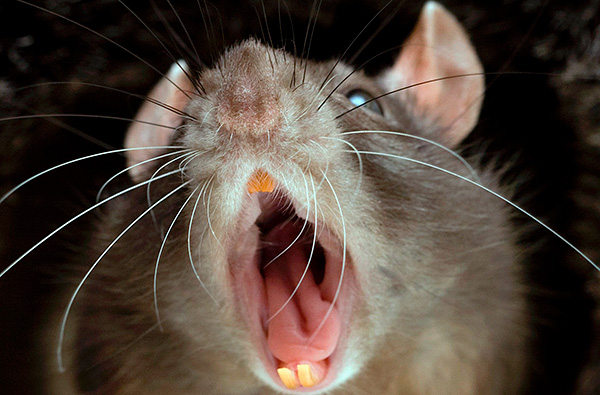
However, some rules must be followed:
- Sound should not be played regularly so that animals do not get used to it;
- Sound should be heard well throughout the room;
- Cries of danger must be recorded, not just a squeak;
- Recording and reproducing equipment should capture the ultrasonic frequency range.
In domestic conditions, the implementation of this method will in most cases be ineffective. Firstly, to record a ratty squeal, using a smartphone or a computer microphone is not the best option, since the ultrasound component cannot be recorded at all (even vibrations above 15-17 kHz are already recorded with distortions). Secondly, reproduction will also require emitters (speakers) capable of reproducing ultrasonic vibrations without significant distortion. Well, and thirdly, few people want to live in a house where a loud rat screech is constantly heard suddenly.
The use of ultrasonic repellers of rats and mice in this regard would be more justified.
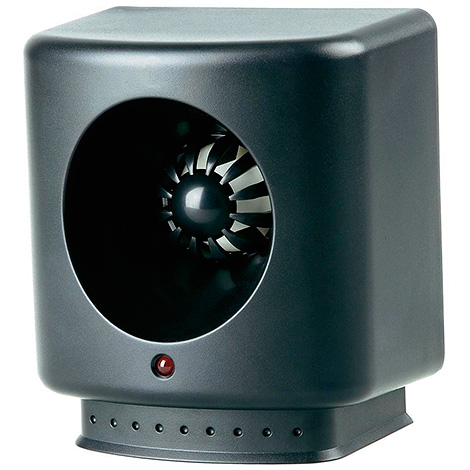
On a note
The people know a harsh, old-fashioned way to scare away rats: earlier they just caught a live rat and nailed it to the wall. While the animal was dying, its relatives heard terrible cries of an agonizing fellow. However, for humane reasons, it is impossible to consider such a method for practical implementation.
What heaters do not like and do not gnaw rats and mice
There are several types of insulation, which are a fairly reliable barrier to rats and mice in private homes.It would not be entirely correct to say that pests do not like them or are afraid - rather, they simply can’t gnaw through such materials, and if they can, they usually do not.
Among them:
- Foam glass - insulation, which rats do not gnaw because of its hardness;

- Expanded clay of different fractions - for the same reasons. Although, the smallest expanded clay used for dry screed is not always a reliable barrier for rats and mice - although they do not like such a heater, they are able to rake and wade through its layer to the floor;

- Foam concrete - it lends itself to rat teeth, but due to the presence of cement in the composition, the animals do not like him and do not bite him;

- Ecowool - a heater, which, due to the toxicity of the impregnation components (boric acid), is unattractive for rats and mice.

But the notorious glass wool rats are not afraid. Even more than that, they willingly arrange nests and shelters in it, easily lay passages here, and shredded glass as a part of the material does not seem to bother them at all. Glass mineral wool is similar to other mineral insulators, including basalt fiber, as well as polystyrene, polyurethane foam and penoizol - in them animals live willingly and raise offspring.
Herbs that are used to scare away rats
A great temptation for many people is the idea that you can take some grass from mice and rats, which supposedly is enough to spread out in different places of the room to forget about these pests once and for all.

Among the folk remedies for rodents, it is recipes with certain herbs that can be found most often. So, it is believed that mice and rats are afraid of:
- Peppermint fresh or dried;
- Beans (especially roasted seeds);
- Blackroot - any parts of the plant;
- Elderberries, mainly bundles of its berries;
- Hot peppers, both in pods and ground;
- Chamomile flowers;
- Tansy - its inflorescences, it is possible in bunches of grass;
- Wormwood is also mostly dry grass.
However, the main disadvantage of herbs recommended for scaring away rats and mice is that the animals get used to their smell very quickly, or, in the case of poisonous plants, stop biting the grass. Even if one or two animals are poisoned by the same black root, the rest of their relatives will not leave the premises, but simply will avoid the suspicious bait.
Folk remedies whose repulsive abilities are doubtful
Folk art is replete with ideas and recipes of means that rats should seem to avoid, but in practice this often does not happen.
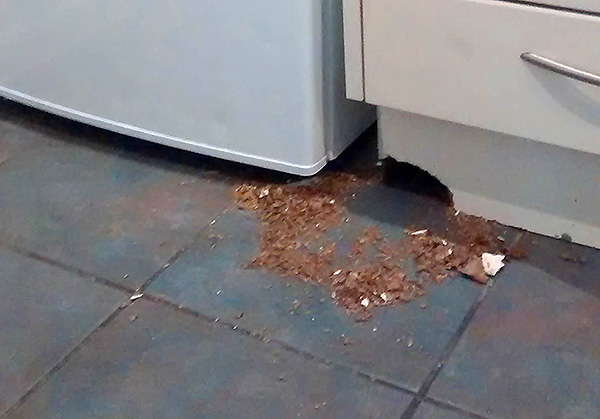
Here are just the most famous of them:
- Vinegar - it is believed that rats are afraid of him because of a sharp unpleasant smell. Some even try to use acetic essence unsafe in circulation for this purpose. At the same time, however, it is silent that not only rodents, but also residents of the room will have to inhale the aroma of vinegar;
- Essential oils and perfumes. It is doubtful that the animals that conquered the whole world from India to the United States would save before the exquisite aromas of world famous perfume houses or the smells of essential oils. Such means can alert them, but are not able to drive out of the house;
- Chlorine - Rats really avoid places where chlorine smells too strong (bleach releases a small amount of chlorine gas into the air - a very corrosive poisonous gas). However, the active use of bleach in an apartment or house is a dubious undertaking, since the residents themselves will have to inhale such a fragrance. In addition, the duration of the action of the drug is small, since bleach quickly loses its activity in air;
- Naphthalene - rats are not always afraid of it, and, besides, this same tool is recognized as a carcinogen and is prohibited for use in residential premises;
- Ash. The use of ash to scare away rats is a typical folk myth, since it does not cause any fear or special discomfort in rodents;
- Broken glass poured into the rodent passages is also a kind of untenable legend;
- The smell of scorched rubber and scorched fur - such folk remedies may indeed scare rats once, but they are incapable of becoming a reliable permanent means of dealing with them;
- Turpentine, kerosene and gasoline - for them, everything is the same as for vinegar. In addition, they are also fire hazardous;
- Spikes of burdock, which supposedly scare the animals by clinging to their fur. Really ineffective;
- Tobacco or cigarettes - despite their strong smell, they practically do not scare away rodents.
On a note
In general, rats are not afraid of water (moisture) and cold. They feel great in damp basements, can swim for a long time (it is known that in nature they catch ducklings and frogs in the water), and calmly endure the cold if they have access to food sources. Situations are described when rats lived for several generations in freezers at an air temperature of -18 ° C, breeding inside frozen pork carcasses. Therefore, airing a house or apartment in winter will not help get rid of rats.
An interesting video: how to get rodents that poison doesn't take and public services are afraid
Incredible Facts About Rats That You Won't Believe In Right Away

